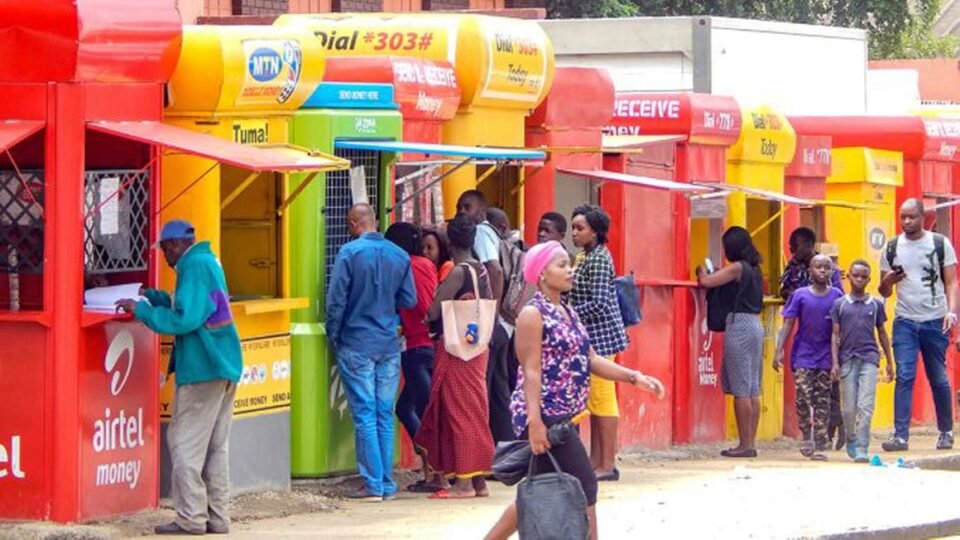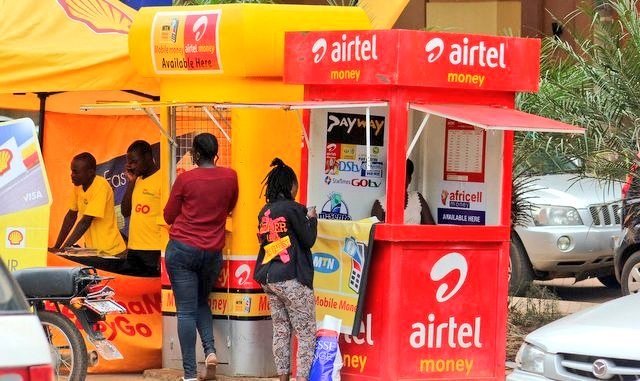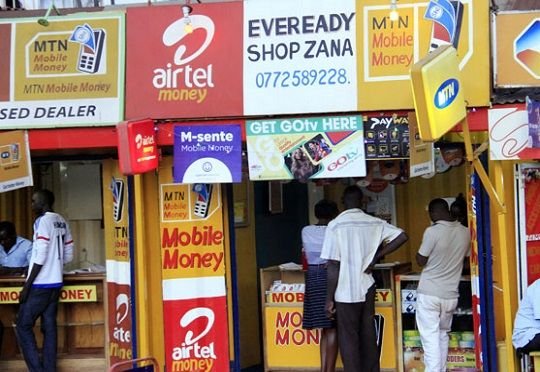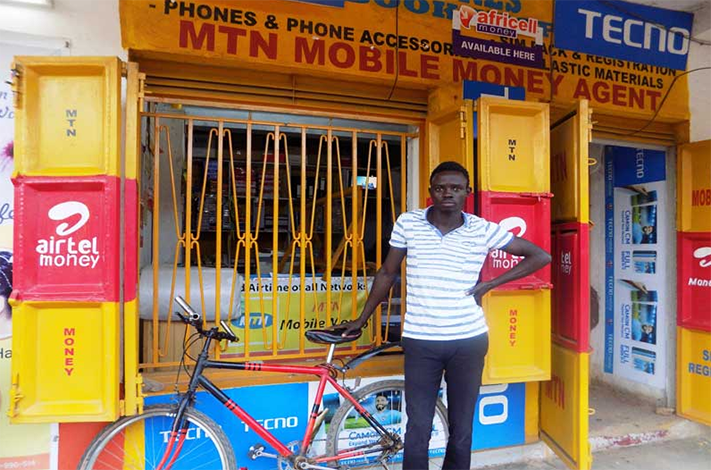In Africa, Two telecommunications giants—MTN Group and Airtel Africa—have emerged as the dominant players in this space, their respective platforms MTN Mobile Money (MoMo) and Airtel Money vying for market supremacy across the continent. As mobile phones increasingly serve as financial lifelines for millions, the stakes of this corporate battle extend far beyond balance sheets to the very fabric of economic development across Africa.
While MTN currently maintains its position as market leader with superior subscriber numbers and transaction volumes, Airtel’s aggressive expansion strategy and innovative service offerings are steadily eroding this lead. This shifting competitive landscape raises critical questions about the future of mobile financial services in Africa and which company is best positioned to capture the enormous growth potential that still remains untapped.
The competition between MTN and Airtel plays out across a complex patchwork of regulatory environments and market conditions spanning more than 15 countries. MTN operates its mobile money services in 16 markets, with particularly strong positions in Ghana, Uganda, Rwanda, and Cameroon. Airtel Money is active in 14 countries, with Kenya, Tanzania, Uganda, and Malawi representing its strongest markets. The geographic overlap creates direct competition in 12 countries, though their relative strengths vary significantly by region.
Nigeria, Africa’s largest economy, represents a particularly contested battleground. After regulatory hurdles delayed both companies’ entry into mobile financial services there, MTN’s MoMoPay and Airtel’s SmartCash are now fighting for dominance in this crucial market of over 200 million people. Since receiving Payment Service Bank licenses in 2022, both companies have invested heavily, with MTN leveraging its larger telecommunications customer base of 74 million versus Airtel’s 48 million.
“Nigeria is the crown jewel in Africa’s mobile money potential,” says Adesoji Solanke, Director of Frontier/SSA Banks & Fintech Equity Research at Renaissance Capital. “Whoever establishes dominance here will have a significant advantage in the broader continental race.”
In Uganda and Ghana, where mobile money penetration exceeds 60% of the adult population, MTN maintains substantial leads. MTN Ghana controls approximately 82% of mobile money transaction value, while MTN Uganda commands a 56% market share. Airtel has focused on undercutting MTN’s transaction fees in these markets, offering discounts of up to 30% for certain transaction types.
Rwanda presents a more balanced competitive landscape. MTN Rwanda’s market share in mobile financial services has declined from 65% to 58% over the past three years, while Airtel Rwanda has grown from 26% to 36%, according to the National Bank of Rwanda’s 2024 payment systems report.
Measuring Success: Key Performance Indicators
The competition can be quantified through several critical metrics that reveal the current state of play between these two telecommunications giants.
Subscriber Base and Growth: MTN MoMo boasts approximately 64.6 million active users (30-day basis) across its operations as of Q1 2025, representing roughly 28% of its total telecommunications customer base. Airtel Money claims 30.9 million active users, about 25% of its telecom subscribers. However, Airtel’s mobile money user base is growing faster at 24% year-over-year compared to MTN’s 16%.
Transaction Volumes and Values: MTN processed approximately 11.8 billion mobile money transactions in 2024, with a total value exceeding $212 billion. Airtel reported 6.5 billion transactions worth approximately $51.2 billion during the same period. While MTN’s absolute numbers remain substantially higher, Airtel’s transaction volume growth rate of 31% outpaces MTN’s 22%.
Revenue Generation: Mobile money services generated $1.1 billion in revenue for MTN in 2024, representing about 9% of the group’s total revenue. Airtel Money contributed $712 million, accounting for approximately 12% of Airtel Africa’s total revenue. Notably, Airtel’s mobile money revenue growth of 29% exceeded MTN’s 19%, suggesting a gradual narrowing of the revenue gap.
Agent Networks: MTN operates approximately 1.2 million active mobile money agents across its markets compared to Airtel’s 850,000. Agent network density is crucial for service accessibility, particularly in rural areas where traditional banking infrastructure is limited. MTN maintains a significant advantage in West African markets, while Airtel’s agent network is more robust in East Africa.
Average Revenue Per User (ARPU): MTN generates approximately $17 annually per active mobile money user, while Airtel averages $23. This higher ARPU for Airtel suggests more extensive usage of higher-margin services like loans and cross-border transfers among its customer base.
MTN’s Mobile Money Empire
MTN’s mobile money journey began in Uganda in 2008, expanding rapidly to become Africa’s largest mobile financial services provider by subscriber count. The platform’s evolution from basic peer-to-peer transfers to a comprehensive financial ecosystem has been deliberate and methodical, built on MTN’s telecommunications infrastructure advantage.
“Our strategy has always been ecosystem-driven,” explains MTN Group CEO Ralph Mupita. “Mobile money isn’t a standalone service but an integrated component of digital inclusion that leverages our broader telecommunications footprint.”
This approach has yielded impressive financial results. MTN MoMo’s contribution to group service revenue has increased from less than 2% in 2015 to approximately 9% today. In markets like Ghana and Uganda, mobile money contributes over 20% of MTN’s country-level revenue, demonstrating how financially significant these services have become.
MTN’s primary strength lies in its comprehensive agent network—particularly important in rural areas—and its ability to cross-sell services to its larger telecommunications customer base. In Ghana, for instance, 67% of MTN telecommunication subscribers are also MoMo users, indicating successful customer conversion.
The company has also invested heavily in strengthening its fintech infrastructure, allocating $268 million in capital expenditure to mobile financial services in 2024 alone. This investment supports the platform’s reliability—a critical factor for services dealing with people’s finances—and enables the processing of over 32 million transactions daily.
MTN’s partnership with Mastercard to enable acceptance of MoMo payments across Mastercard’s global merchant network represents another strategic advantage, expanding users’ payment options beyond domestic markets. The group has also developed open APIs that allow third-party developers and businesses to integrate with MoMo, fostering a broader ecosystem of services.
Despite these strengths, MTN faces challenges. Regulatory pressures have intensified, with several countries imposing new taxes on mobile money transactions or requiring local ownership of mobile money operations. In Uganda, for example, MTN was forced to list its mobile money subsidiary separately on the local stock exchange, while Ghana’s government has implemented additional levies on transactions above certain thresholds.
Airtel Money’s Aggressive Challenge
While Airtel entered the mobile money arena later than MTN, launching its service in 2012, it has pursued an aggressive growth strategy characterized by rapid expansion and strategic partnerships. The 2019 decision to separate Airtel Money into a distinct business unit partially owned by Mastercard and Qatar Investment Authority (which together acquired a 25% stake for $300 million) provided capital for expansion while signaling confidence in the platform’s potential.
“The partial divestiture of Airtel Money was a strategic masterstroke,” says Thecla Mbongue, Senior Research Analyst at Omdia. “It not only brought in capital but also expertise in global financial services, allowing Airtel to accelerate innovation without being constrained by the traditional telecom business model.”
This strategic independence has enabled Airtel Money to be more nimble in its approach to market expansion and product development. The company has prioritized interoperability, forming partnerships with banks like Standard Chartered and Ecobank that allow seamless fund transfers between bank accounts and mobile wallets. These partnerships extend Airtel Money’s reach beyond its own telecommunications customer base.
Airtel has also been aggressive in pursuing the merchant payments segment, a critical growth area as economies increasingly digitize. Its “Airtel Africa Pay” solution, launched in 2023, now counts over 530,000 active merchants across its markets, compared to MTN’s approximately 850,000 merchants. The growth rate of Airtel’s merchant acquisition—41% year-over-year—outpaces MTN’s 26%.
The company’s approach to pricing has also proven effective. Airtel typically charges 10-15% less than MTN for comparable transactions, a strategy that has resonated particularly with lower-income segments. This pricing strategy, while potentially sacrificing short-term margins, has accelerated user acquisition and transaction volumes.
Airtel’s mobile money operations have demonstrated impressive financial performance. The segment’s EBITDA margin reached 54.2% in 2024, compared to MTN MoMo’s 48.9%, indicating more efficient operations despite smaller scale. The average revenue per data user has also increased by 8.3% year-over-year, reflecting successful upselling of higher-value services.
Beyond Basic Transfers: Expanding Financial Ecosystems
Both companies have recognized that the future of mobile money extends far beyond basic cash transfers. The race to build comprehensive financial ecosystems has become a key differentiator in their strategic approaches.
MTN has leveraged its scale to develop a broader range of financial products. MoMo customers can now access microloans in 9 markets, insurance products in 7, and savings accounts in 10. The loan book has grown particularly impressively, with MTN disbursing over $2.5 billion in microloans in 2024, generating significant interest income while addressing the critical need for short-term financing among underbanked populations.
Airtel has countered with innovative partnerships that extend its service offerings despite having less scale. Its collaboration with Mastercard enables international remittances directly to Airtel Money wallets from 200+ countries. The company has also partnered with various insurtech firms to offer health, life, and crop insurance products tailored to local market needs. Airtel’s loan disbursement totaled approximately $980 million in 2024—smaller than MTN’s but growing at 37% compared to MTN’s 24%.
International remittances represent another battleground, with both companies reducing fees to capture a larger share of Africa’s $48 billion annual inbound remittance market. MTN’s partnership with Western Union and MoneyGram provides broader global reach, while Airtel’s integration with WorldRemit and Mukuru offers competitive pricing, typically 20-30% below traditional remittance services.
“The shift from transfer-centric services to comprehensive financial platforms represents the next frontier,” explains Yele Oyekola, fintech analyst at EFG Hermes. “Success will be determined not by who has the most users but by who can most effectively monetize those relationships through diverse financial services.”
The Customer Perspective
From a user standpoint, both platforms offer similar core functionality but differ in their execution and emphasis. MTN MoMo typically provides a more comprehensive feature set within a single application, while Airtel Money offers a more streamlined experience focused on ease of use.
Transaction reliability—the success rate of payment attempts—remains similar between the two platforms, with both claiming success rates above 98%. However, MTN’s larger infrastructure investments have yielded advantages in transaction processing speed, averaging 2.8 seconds compared to Airtel’s 3.6 seconds. This difference, while seemingly minor, becomes significant during peak usage periods.
Fee structures reveal different strategic emphases. MTN generally charges premium rates for its services but offers volume-based discounts to frequent users. Airtel typically positions itself as the more affordable option, with transaction fees approximately 12% lower on average across markets, though with fewer promotional discounts.
Customer satisfaction metrics show a narrowing gap. According to a 2024 survey by Financial Sector Deepening Africa spanning six countries, MTN MoMo achieved an average Net Promoter Score (NPS) of 47, while Airtel Money scored 42—significantly closer than the 12-point gap measured in 2021. Airtel outperforms MTN in customer service response times, resolving complaints in an average of 6 hours versus MTN’s 9 hours.
“I use both services depending on what I’m doing,” explains Sarah Nantaba, a small business owner in Kampala, Uganda. “MTN has more features and merchants, but Airtel’s fees are better for sending money to my suppliers. The competition has definitely improved both services over the years.”
Future Battlegrounds
As the mobile money race intensifies, several emerging fronts will likely determine long-term competitive positioning.
Artificial Intelligence and Personalization: Both companies are investing in AI capabilities to enhance fraud detection, creditworthiness assessment, and personalized financial recommendations. MTN has established a dedicated fintech AI lab in Kigali, Rwanda, while Airtel has partnered with various fintech startups to incorporate machine learning into its services.
Super App Development: The transition from mobile wallet to financial “super app” represents a strategic priority for both companies. MTN’s MoMo App 2.0, launched in late 2024, integrates e-commerce, ride-hailing, and utility payments alongside traditional financial services. Airtel is pursuing a similar strategy through its Airtel X app, currently being piloted in Kenya, Uganda, and Tanzania.
SME Financial Services: Small and medium-sized enterprises represent an underserved market segment with significant revenue potential. Both companies are developing specialized offerings for businesses, including inventory financing, supply chain payments, and digital bookkeeping tools. MTN’s “MoMo for Business” currently serves approximately 2.3 million SMEs compared to Airtel’s 1.8 million business users.
Blockchain and Digital Currencies: As central bank digital currencies (CBDCs) gain traction across Africa, integration with these systems represents both an opportunity and a challenge. MTN has participated in Ghana’s e-Cedi pilot program, while Airtel is working with the Central Bank of Kenya on the digital shilling initiative. Both companies are also exploring stable coin integration to facilitate cross-border transfers.
Conclusion
The mobile money competition between MTN and Airtel reflects broader developments in Africa’s financial landscape, where telecommunications companies have become crucial financial service providers. While MTN maintains leadership through scale, infrastructure depth, and broader market presence, Airtel’s focused strategy, competitive pricing, and nimble partnerships have enabled it to narrow the gap.
The competition has yielded substantial benefits for African consumers and economies. Transaction fees have declined by an average of 22% over the past five years in markets where both companies operate. Service reliability has improved markedly, with system downtimes decreasing from an average of 72 hours annually in 2020 to less than 24 hours in 2024. The range of available financial services has expanded dramatically, contributing to improved financial inclusion across the continent.
“The MTN-Airtel competition represents one of the most consequential business rivalries in modern Africa,” observes Carlos Lopes, former Executive Secretary of the Economic Commission for Africa. “Their battle for mobile money supremacy is simultaneously building the continent’s financial infrastructure and bringing millions into the formal economy.”
For investors, regulators, and users alike, the evolving competitive dynamics between these two giants will continue to shape Africa’s financial future. MTN’s established dominance provides a strong foundation for continued leadership, but Airtel’s momentum and focused strategy make it a formidable challenger with the potential to claim the mobile money crown in specific markets.
As Africa’s unbanked population—still numbering over 350 million adults—increasingly adopts mobile financial services, both companies have substantial growth opportunities ahead. The ultimate winner may not be determined by who captures the largest market share but by who most effectively balances scale with innovation, compliance with creativity, and profitability with financial inclusion.
What remains clear is that as MTN and Airtel continue their intense competition, African consumers and economies stand to benefit from improved services, lower costs, and accelerated financial innovation—turning a corporate rivalry into a powerful engine for economic development across the continent.







